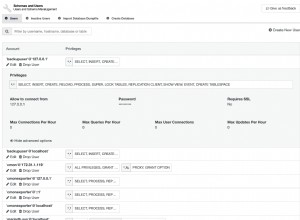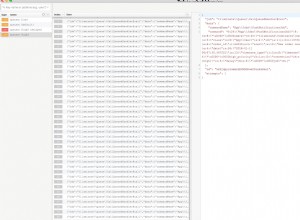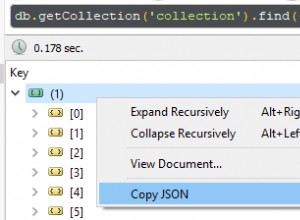अस्वीकरण:मैं सर्वर साइड पर ऐसा करने की अनुशंसा नहीं करता (इसलिए MongoDB के अंदर) बल्कि उस मामले को क्लाइंट साइड पर हैंडल करता हूं।
उस ने कहा, यहां आपकी समस्या का एक सामान्य समाधान है जो आपके विशिष्ट मामले के लिए आसानी से अनुकूल होना चाहिए।
कल्पना कीजिए कि आपके पास निम्नलिखित दस्तावेज़ हैं (या आपके उदाहरण के अनुसार एकत्रीकरण पाइपलाइन से आउटपुट):
{
"category" : 1
}
{
"category" : 1
}
// note the missing { category: 2 } document here
{
"category" : 3
}
निम्न पाइपलाइन खाली बकेट बनाएगी (इसलिए "गैप" मानों के लिए 0 की गिनती वाले दस्तावेज़ जो category में मानों की श्रेणी से गायब हैं फ़ील्ड - इस मामले में नंबर 2):
var bucketSize = 1;
db.getCollection('test').aggregate({
$group: {
_id: null, // throw all documents into the same bucket
"min": { $min: "$category" }, // just to calculate the lowest
"max": { $max: "$category" }, // and the highest "category" value
"docs": { $push: "$$ROOT" } // and also keep the root documents
}
}, {
$addFields: {
"docs": { // modify the existing docs array - created in the previous stage
$concatArrays: [ // by concatenating
"$docs", // the existing docs array
{
$map: { // with some other array that will be generated
input: {
$range: [ "$min", "$max", bucketSize ] // based on the min and max values and the bucket size
},
as: "this",
in: { // but represented not as a plain number but as a document that effectively creates a bogus document
"category": "$$this", // the bogus category will be set to the respective value
"bogus": 1 // marker that allows us not to count this document in the next stage and still get a bucket from $group
}
}
}
]
}
}
}, {
$unwind: "$docs" // flatten the "docs" array which will now contain the bogus documents, too
}, {
$group: {
_id: "$docs.category", // group by category
"count": { // this is the result we are interested in
$sum: { // which will be aggregated by calculating the sum for each document of
$cond: [ // either 0 or 1 per document
{ $eq: [ "$docs.bogus", 1 ] }, // depending on whether the document should count as a result or not
0,
1
]
}
}
}
})
उपरोक्त क्वेरी का आउटपुट होगा:
{
"_id" : 2,
"count" : 0.0 // this is what we wanted to achieve
}
{
"_id" : 3,
"count" : 1.0 // correct number of matches
}
{
"_id" : 1,
"count" : 2.0 // correct number of matches
}




